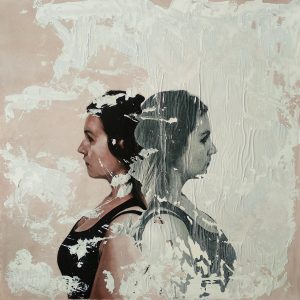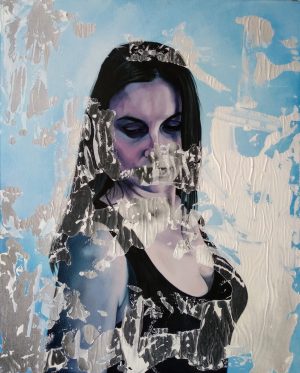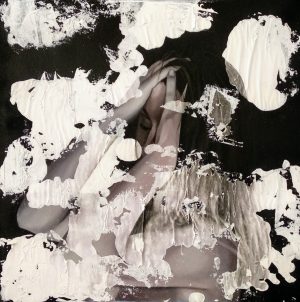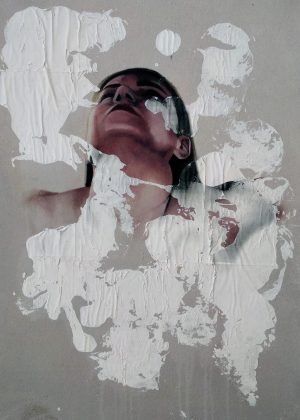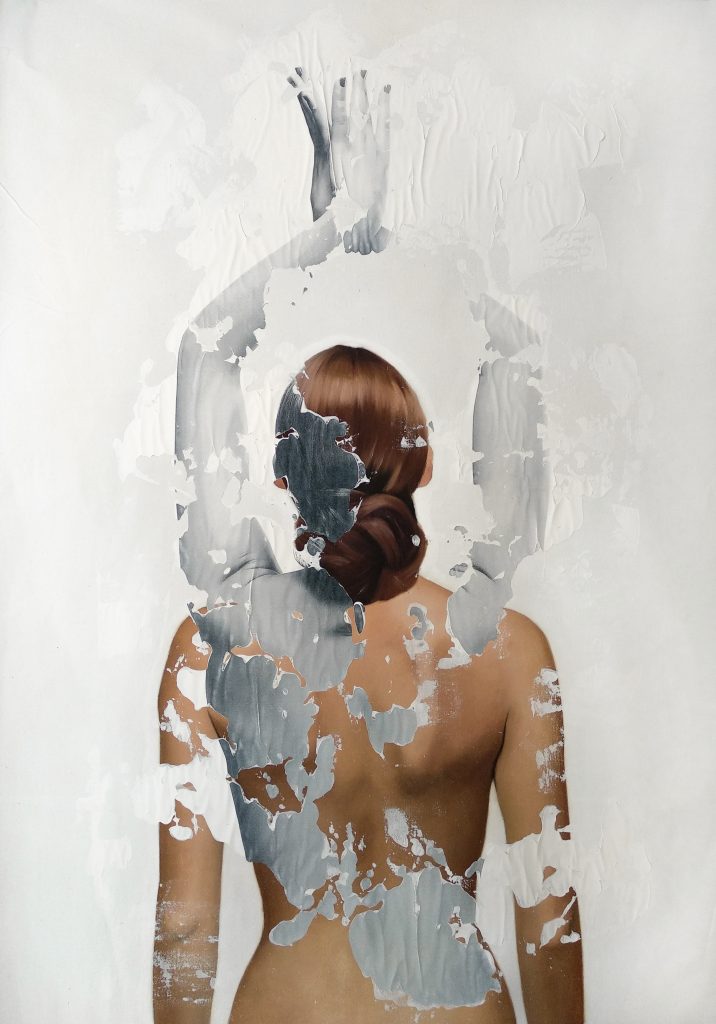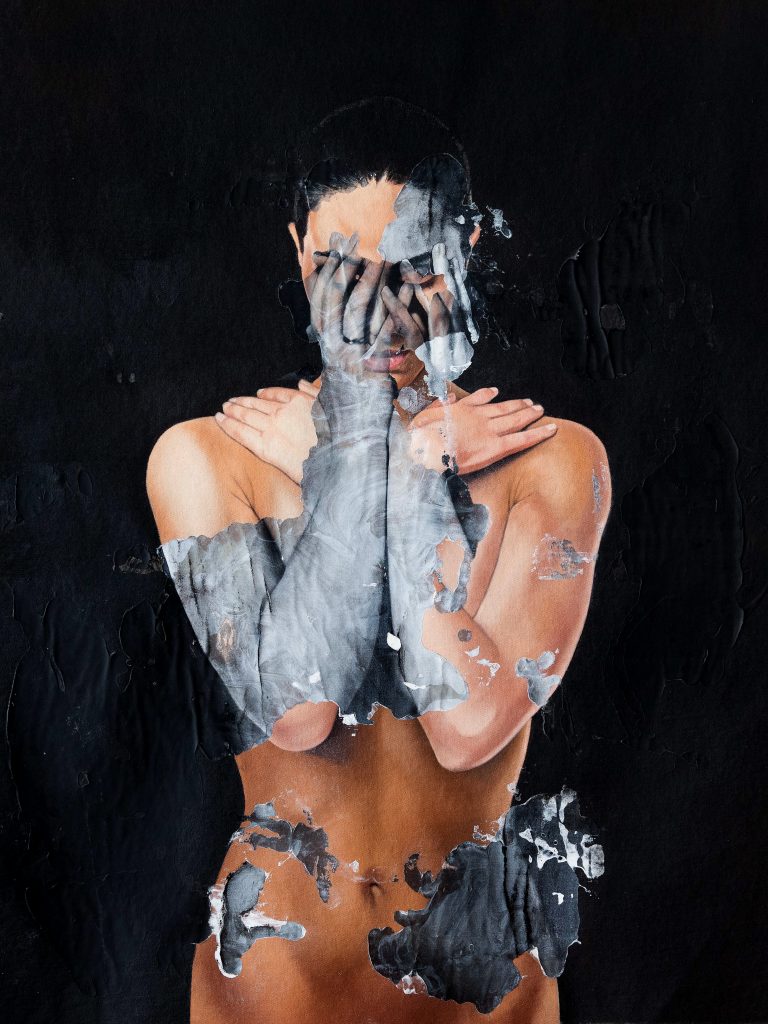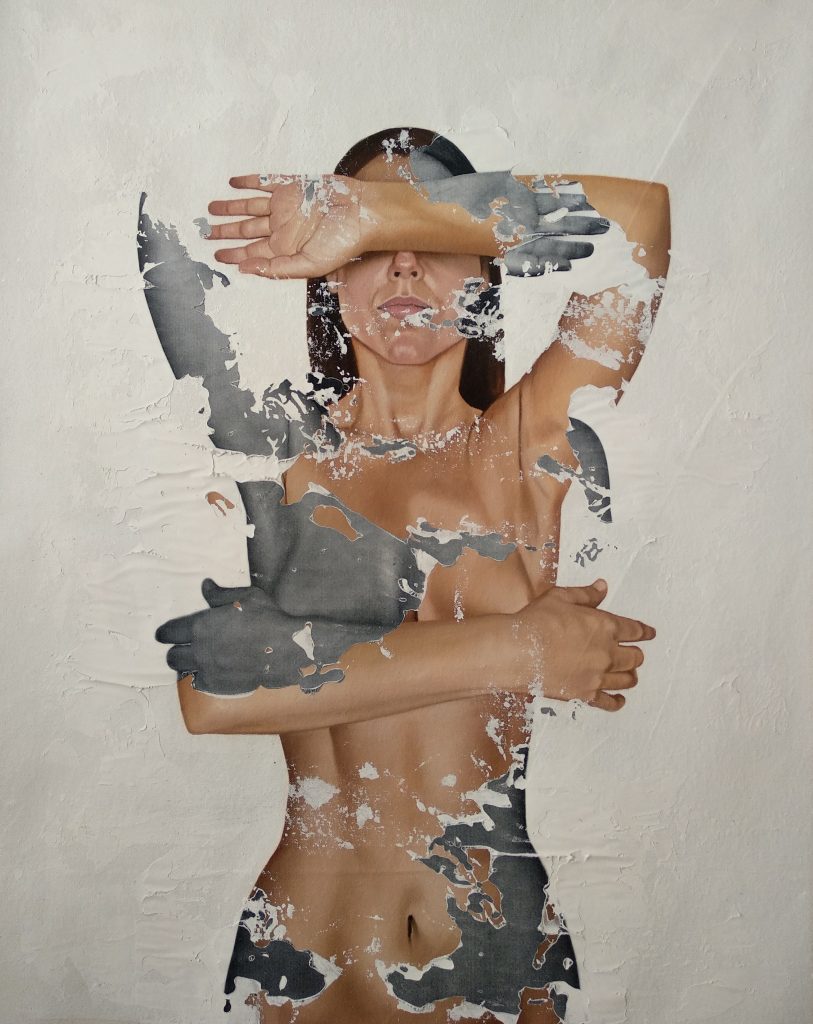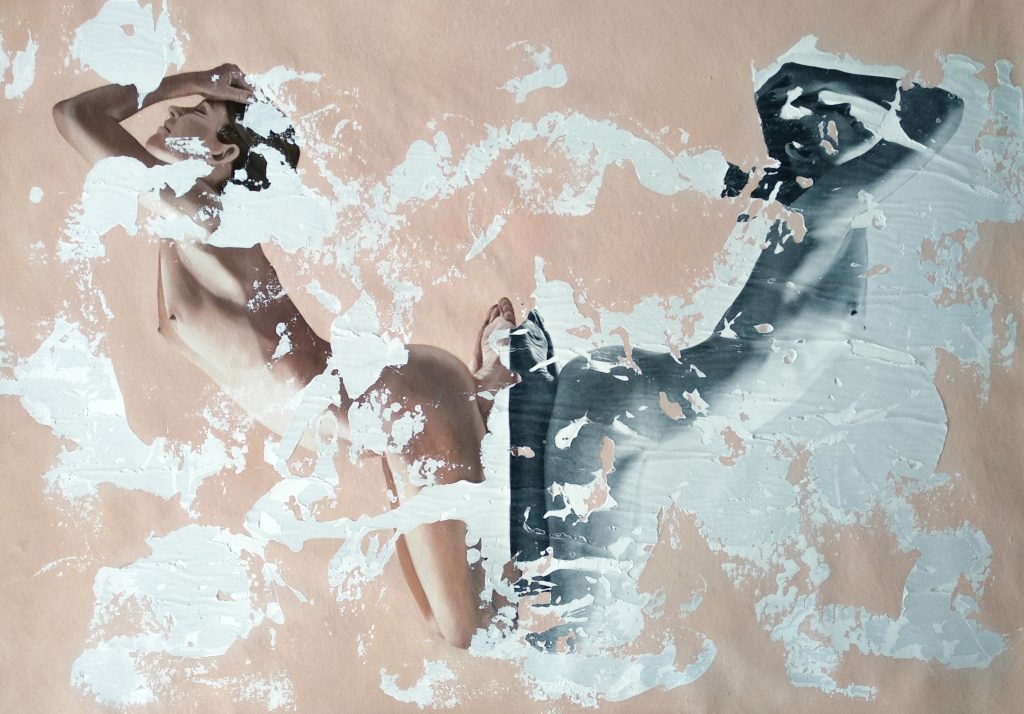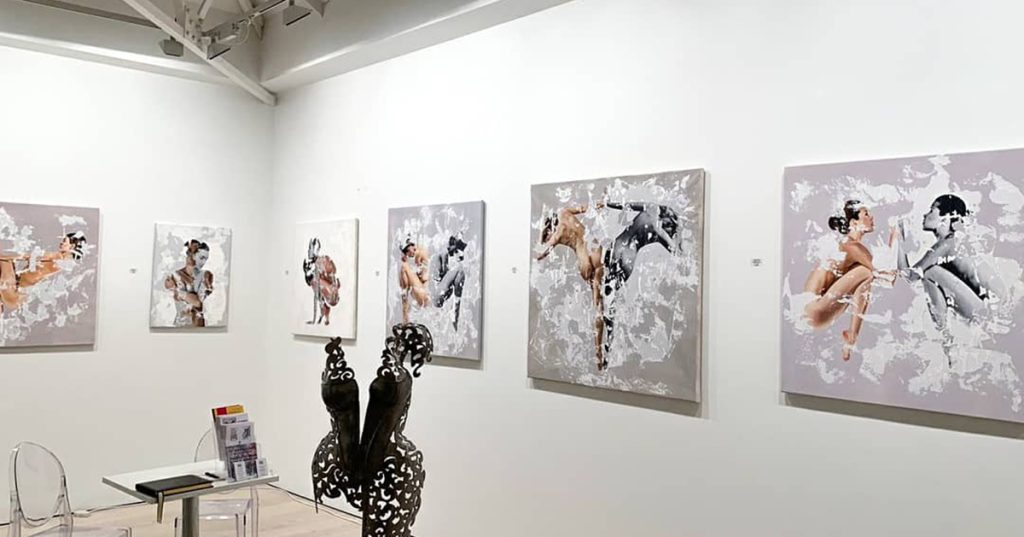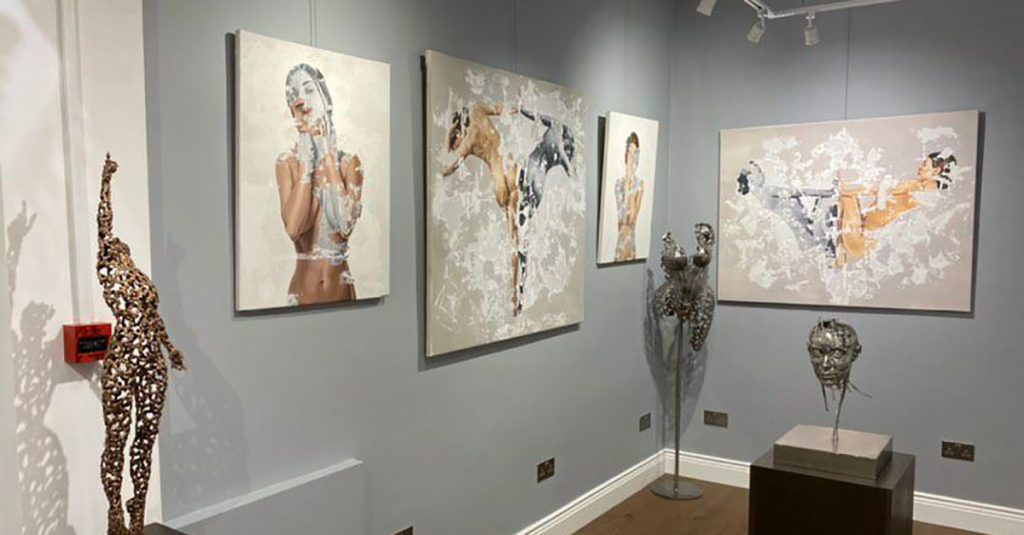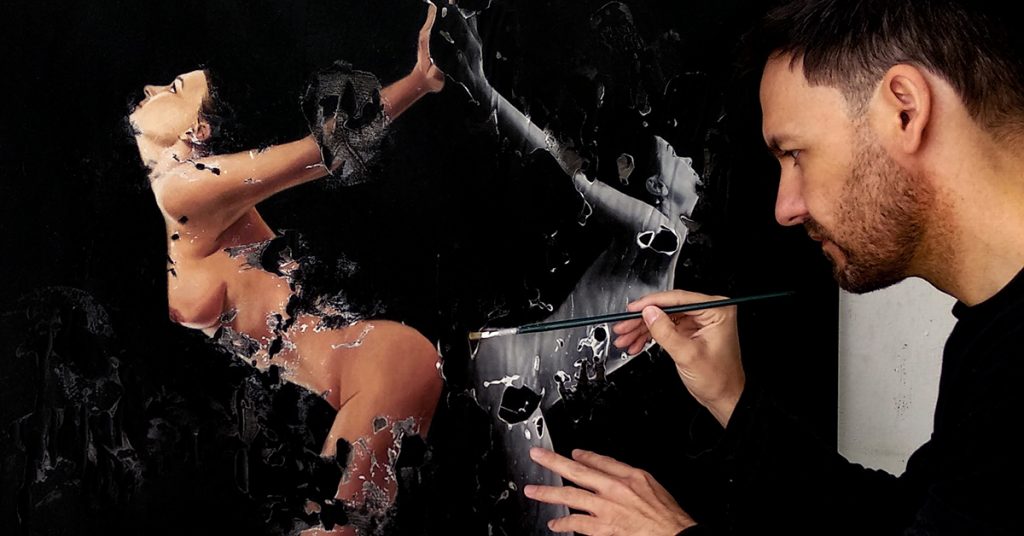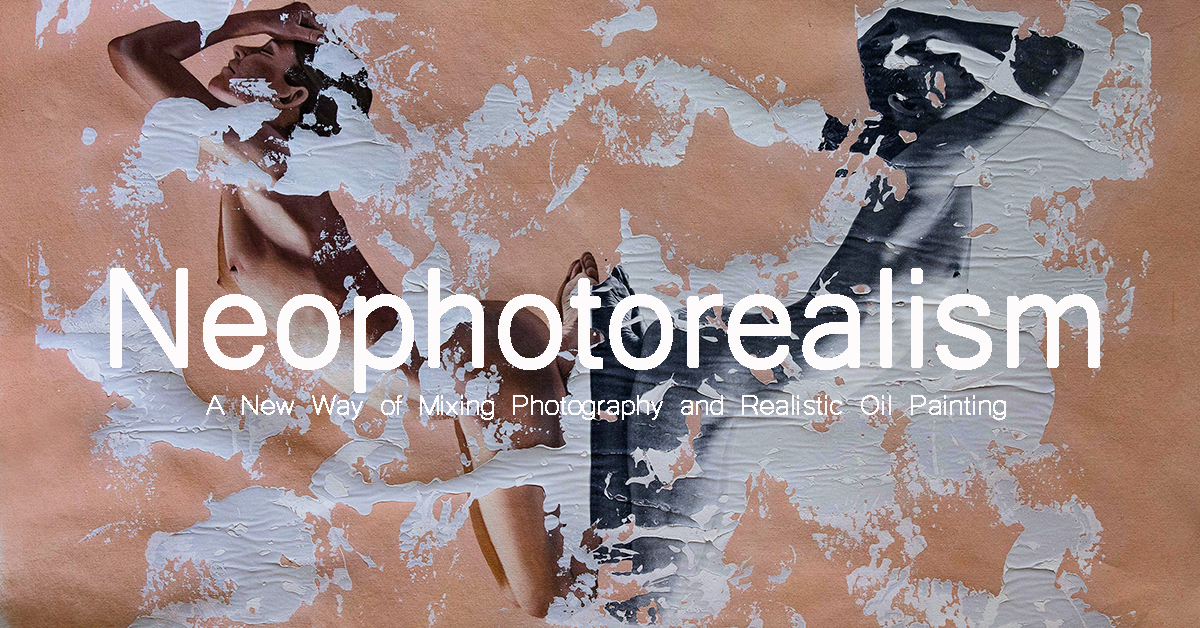
I. Introduction
In this article we will explore the innovative technique of Neophotorealism, a new way of mixing photography and realistic oil painting in Figurative Expressionism created and developed by Raúl Lara.
A. Explanation of the topic
Figurative Expressionism is a form of art that is characterized by the use of realistic imagery and forms, as opposed to abstract forms. It is a style that has been around for centuries and has evolved over time to include a variety of techniques and mediums.
B. Brief overview of the Raúl Lara´s neophotorealism technique
Neophotorealism is a new and unique technique that combines the use of photography through image transfer, and traditional realistic oil painting to create a new form of figurative expressionism. This technique is the brainchild of artist Raúl Lara, who developed this method to achieve a new level of realism, depth and texture that is not possible with other forms of art. The technique also allows for a more dynamic and expressive use of the figure, particularly the woman figure, in the artist’s works.
New Releases
II. What is Figurative Expressionism?
A. Definition and history of figurative expressionism
Figurative expressionism is an art movement characterized by the use of realistic images that emerged in the early 20th century, and it is often associated with German Expressionism, Fauvism, and the School of Paris. Figurative expressionism is a way of creating art that is based on the observation of the world, but it is not limited to a strict realism. It allows for a more expressive and emotional interpretation of the subject matter.
B. Comparison to other forms of expressionism
Figurative expressionism is often compared to other forms of expressionism, such as abstract expressionism. The main difference between the two is that abstract expressionism focuses on the use of abstract forms and colors, while figurative expressionism focuses on the use of realistic imagery.
C. How Raúl neophotorealism style fits into the broader category of figurative expressionism
Raúl´s technique, with its unique combination of photography and oil and acrilyc painting, fits into the broader category of figurative expressionism by the use of human figure as a subject, but it also pushes the boundaries of traditional figurative art by introducing new techniques and elements to create a fresh and contemporary take on the style.
III. The Neophotorealism Technique
A. Explanation of the neophotorealism technique
Neophotorealism is a new and unique way of combining modern elements like image transfer from a photography by the use of gessos and traditional figurative oil painting. The technique involves in painting a realistic figure using tradicionas methods of oil and acrilyc painting and one its complelety dry and, by taking photographs of the subject matter and transforming them on digital ways, transferring them onto the canvas using mediums like gesso. a process known as image transfer or phototransfer.
B. Use of photography and image transfer in the technique
Photography plays an important role in the Raúl´s neophotorealism technique as it provides the artist with a high level of detail and accuracy in capturing the subject matter. The use of image transfer then allows the artist to create “broken or incompletes” black and white images wich add a sense of depth and texture to the painting, creating a more dynamic and expressive work of art.
C. Use of traditional realistic oil painting in the technique
Oil painting is the base of the work, always adjusting the skin tones to give a very realistic appearance of the figure used as a model before adding the image transfer. This use of paint is what differentiates neophotorealism from other art forms that rely solely on photography or digital manipulation.
D. Unique elements of the neophotorealism technique, such as color, texture, and the use of the woman figure
One of the unique elements of neophotorealism technique is the high contrast created by the colored oil painted figure and the black and white image as a result of the photo transfer. Another key point is the creation of unique and representatives textures by the using of guesso. This allows for the creation of a more tactile and engaging painting experience. Additionally, the use of the woman figure is also a common theme in Raúl´s work as is taken as a symbol of purity and representation of the human being.
IV. Some examples of Raúl´s figurative expressionism
A. Images of Raúl’s work that showcase the neophotorealism technique
B. Explanation of the inspiration and meaning behind the works
Raúl recent work delves into the masks and the many different faces that individuals wear in everyday life. THis body of work reflects on the notion of being one’s true self while simultaneously presenting different versions of oneself to the world. The artist explores the concept of identity and how it is constantly changing and influenced by external factors.
These pieces showcases a colorful figure painted with oils and acrylics in a classical style, representing the face that is presented to the world. Overlaid on top is a broken image of the hidden self, depicted in black and white with textures and reliefs created by the photo transfer technique. The two figures merge together to create a blended representation of the different facets of an individual’s identity.
The artist takes inspiration from the popular belief that individuals are shaped by their environment and mold themselves to fit the circumstances. Through their work, the artist hopes to evoke a connection with the viewer’s own inner struggles and conflicts. These artworks serves as a reminder that sometimes individuals can overcome their circumstances and bring forth the other aspects of themselves that they have kept.
V. Reception of Neophotorealism
A. How the art world has received the neophotorealism technique
The art world has received the neophotorealism technique with a great deal of interest and curiosity. As a new and innovative form of figurative expressionism, it has sparked debate and discussion among critics and art lovers alike. Many have praised the technique for its ability to blend traditional realistic oil painting with modern photography and digital manipulation, creating a unique and dynamic form of art.
B. Comparison to other contemporary art forms
Neophotorealism is often compared to other contemporary art forms such as photorealism, hyperrealism, and other forms of figurative expressionism, but it is considered as a new and unique way of creating art. Some have even said that neophotorealism is a new trend that may be trending for the future of the art world.
C. Is figurative art making a comeback?
Figurative art has been making a comeback in recent years, with many artists and art lovers rediscovering the power and expressiveness of the human figure in art. Neophotorealism is a new form of figurative art that combines the traditional with the modern, and it is believed that this style of art will continue to grow in popularity and influence in the art world.
VI. Conclusion
A. Summary of key points
This article has explored the topic of figurative expressionism and the new technique of neophotorealism developed by the artist Raul Lara, an innovative way of mixing photography through image transfer and realistic figure oil painting Raul Lara. We’ve examined the history and definition of figurative expressionism, and how neophotorealism fits into this broader category of art. We also examined the unique elements of the neophotorealism technique, such as textures and the use of the woman figure, and how it has been received by the art world.
B. Personal thoughts on the importance of figurative art
Figurative art is an important and powerful form of expression that allows artists to capture the human experience in a deeply personal and meaningful way. The neophotorealism technique is a unique and innovative way to approach figurative art, and it has the potential to open up new possibilities for artists and art lovers alike.
C. Advice for other artists interested in experimenting with neophotorealism
For other artists who are interested in experimenting with neophotorealism, it is important to focus on developing a strong understanding of traditional realistic oil painting techniques, as well as experimenting with different forms of digital manipulation, such as image transfer and phototransfer. Additionally, it is important to find your own unique style and voice as an artist.
D. Future predictions for the art market trends in 2023
The art market is constantly changing, and it is difficult to predict exactly what will be trending in 2023. However, it is clear that figurative art, and new and innovative forms of figurative expressionism such as neophotorealism, will continue to be an important and influential force in the art world. As the interest in this style of art is growing, it is likely that many more artists will begin to experiment with this unique and exciting technique, and that it will continue to inspire and captivate art lovers for many years to come.

